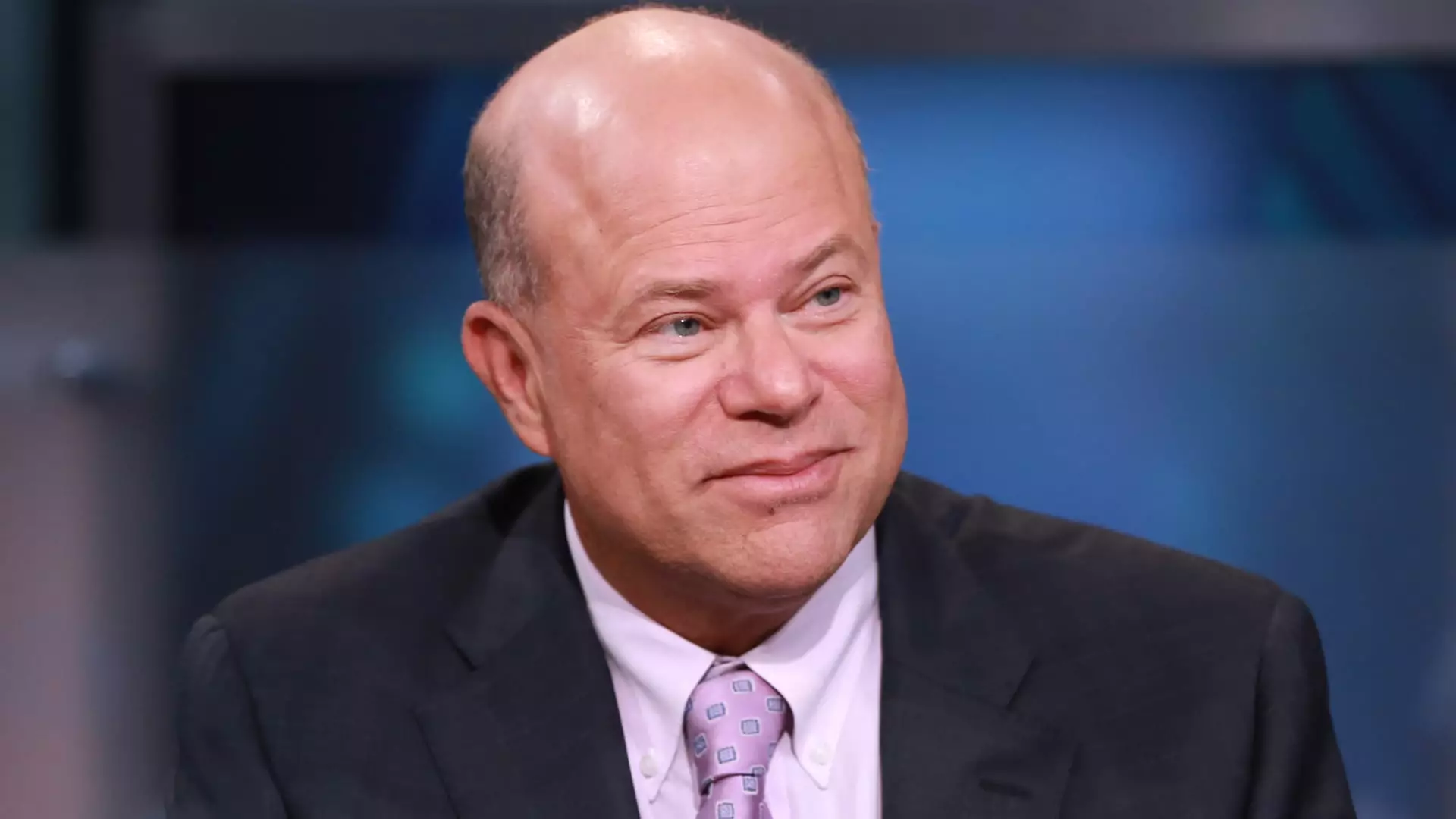The recent discourse around the Federal Reserve’s monetary policy and the implications for investors has become a focal point of attention, particularly following the comments made by David Tepper, the founder of Appaloosa Management. Tepper’s insights challenge market participants to consider not only the strategies employed by the Fed but also the underlying economic indicators that contribute to these decisions. His cautions and bullish stances provide a comprehensive view, reflecting the complexities of investing in a dynamic environment.
David Tepper emphasizes the significance of believing the Federal Reserve when it projects a course of lowering interest rates. As he articulated on CNBC, the Fed has an obligation to maintain its credibility, particularly when it has delivered messages that indicate such a change in policy direction. He noted that Chairman Jerome Powell signaled a “recalibration,” which indicates a thoughtful adjustment rather than mere reactionary measures. Tepper insists that the Fed’s leadership usually follows through on their statements when their conviction runs high, hinting at an expectation that more rate cuts are forthcoming. This viewpoint is pivotal for investors who react not just to current economic conditions but also to the anticipated actions of the central bank.
The recent reduction of half a percentage point in benchmark rates has marked the beginning of the Fed’s first easing campaign in four years. This aggressive move has surprised many, especially when the economy appears to show relative stability. Considering this context, Tepper’s assertion that the Fed will likely implement further cuts indicates a belief in a more cautious and perhaps over-optimistic approach to today’s fiscal policy.
Interestingly, Tepper expresses apprehension about the current macroeconomic setup for U.S. stocks despite the decision to ease rates. He draws parallels to the 1990s, a period characterized by enriched market conditions coinciding with significant rate cuts. Tepper warns of a potential market correction similar to what occurred as the economy faced the transition into Y2K, casting doubt on the wisdom of such unilateral monetary easing when most economic indicators remain defensively strong. The GDP is on an upward trajectory, and consumer spending appears resilient; however, visible signals of labor market slowdowns serve as important variables in understanding where the economy might be headed.
The juxtaposition of Tepper’s concerns with the prevailing economic indicators highlights an underlying tension in market analysis. On one hand, a stable economy suggests ongoing investor confidence; on the other, the Fed’s aggressive actions could imply deeper issues lying beneath the surface that warrant a reevaluation of the bullish market mood.
Central to Tepper’s perspective is the philosophical divide between value and growth investing. He articulates that while he is primarily a value investor, the prospect of easy monetary policy creates favorable conditions for equities in the short term. As such, Tepper refrains from going short on U.S. stocks, viewing the combination of low rates and a reasonably solid economic state as conducive to market engagement. This highlights a critical insight: the capacity for investors to balance their core philosophies while remaining adaptive to macroeconomic shifts.
Yet, Tepper is not simply sidestepping accountability in his investment decisions. His understanding of the markets and affinity for a more value-centered approach reflects a cautious optimism that underscores the importance of staying engaged amid uncertainty. This duality of thought is essential for investors navigating today’s landscape.
Interestingly, Tepper is also directing his focus toward Asian and European equities, particularly in light of challenges within the U.S. market. The openness to exploring opportunities globally allows an eclectic investment philosophy that accounts for shifting economic tides. By pivoting to regions like China, where government measures are boosting economic stability, Tepper underscores the potential for growth that transcends traditional U.S. markets. This shift in focus can serve as a reminder for investors that opportunities may lie beyond domestic considerations.
Tepper’s insights reflect a layered understanding of the complexities surrounding Fed policy, economic indicators, and investment strategies. His assessment provokes an invaluable dialogue regarding investor sentiment amidst central bank actions, revealing the importance of being both vigilant and adaptable in a continuously evolving economic landscape. As the markets face challenges and opportunities alike, remaining aware of the broader implications of monetary policy will be crucial in making informed investment decisions.

